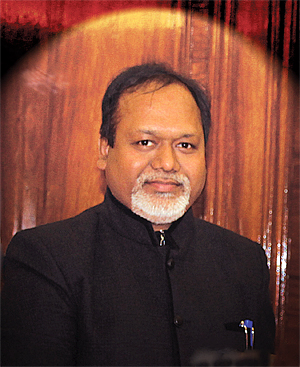INDIAN ARMED FORCES CHIEFS ON OUR RELENTLESS AND FOCUSED PUBLISHING EFFORTS

The insightful articles, inspiring narrations and analytical perspectives presented by the Editorial Team, establish an alluring connect with the reader. My compliments and best wishes to SP Guide Publications.

"Over the past 60 years, the growth of SP Guide Publications has mirrored the rising stature of Indian Navy. Its well-researched and informative magazines on Defence and Aerospace sector have served to shape an educated opinion of our military personnel, policy makers and the public alike. I wish SP's Publication team continued success, fair winds and following seas in all future endeavour!"

Since, its inception in 1964, SP Guide Publications has consistently demonstrated commitment to high-quality journalism in the aerospace and defence sectors, earning a well-deserved reputation as Asia's largest media house in this domain. I wish SP Guide Publications continued success in its pursuit of excellence.
- The layered Air Defence systems that worked superbly, the key element of Operation Sindoor
- Operation Sindoor | Day 2 DGMOs Briefing
- Operation Sindoor: Resolute yet Restrained
- India's Operation Sindoor Sends a Clear Message to Terror and the World – ‘ZERO TOLERANCE’
- Japan and India set forth a defence cooperation consultancy framework, talks on tank and jet engines
A Word from Editor-in-Chief
After the Indian Space Policy in 2023, IN-SPACe’s recent norms and guidelines aim to further streamline implementation of the Policy, encouraging private sector participation in satellite and ground station activities. Although the policy is not yet a binding law, it has spurred growth, attracting numerous startups and substantial funding.

The global space sector is buzzing with activity, and India’s space industry stands out with remarkable growth in the past year, spanning industrial, technological, and policy advancements especially since the Indian government opened the space industry to private players in 2020. Despite the challenges ahead, new initiatives are streamlining processes and improving business accessibility. The liberalisation of FDI regulations, permitting up to 100 per cent FDI in certain areas, further boosts the sector. However, a clear legal and regulatory framework to support private sector growth is required to help India capture a significant share of the global space economy. A report by Ayushee Chaudhary in this edition of the magazine, takes a brief look back at these advancements and how the Indian space industry is faring. This edition also highlights Pakistan’s recent satellite launch, iCUBE-Q, aiming to collect samples from the far side of the moon. This mission underscores the deepening collaboration between Pakistan and China, which began in 1991.
Advances in military aviation technologies are further set to shape the battle skies of tomorrow. Military aviation is embracing a revolution driven by cutting-edge technology. Artificial intelligence (AI) is at the forefront, assisting with autonomous operations, intelligent navigation, and even weapon selection. Unmanned Aerial Systems (UAS), or drones, are rapidly evolving, taking on roles from aerial reconnaissance to combat missions. Advanced pilot support systems utilising AI and enhanced displays are improving pilot decision-making and situational awareness. Additionally, next-generation fighter jets boast features like advanced radars and even laser weaponry, redefining aerial combat. These are just a glimpse of the exciting advancements transforming the skies and shaping the future of military aviation. Air Marshal Anil Chopra (Retd) gives a quick overview of these emerging technologies in aerial combat.
This issue also features the Embraer C-390 Millennium, whose achievements are expanding the footprint of Embraer Defense & Security products and solutions across borders. Embraer C-390 Millennium multi-mission aircraft’s reputation for unmatched mobility, operational flexibility, and low operating costs is attracting international attention. Recent orders from countries like South Korea, Hungary, and Austria solidify its position as a leader in the medium-sized military transport market. This versatile aircraft is poised to become a mainstay in air forces worldwide, revolutionising military transport capabilities across the globe.
In a race towards a net-zero future, global airlines are deploying a multi-pronged attack. Biofuels are being championed, with airlines investing in research and incorporating them into their fuel mix. Modernisation reigns supreme, as airlines update their fleets with fuel-efficient aircraft and implement operational tweaks for optimised flight paths and eco-driving practices. Waste reduction is also a key focus, with comprehensive recycling programmes minimising onboard and ground emissions. Some airlines are even exploring future technologies like electric and hydrogen-powered aircrafts for a truly sustainable future. Joseph Noronha explores the airline industry’s efforts to promote sustainability, while Rohit Goel emphasises the need for a collaborative effort in India to address challenges related to feedstock availability, cost competitiveness, policy frameworks, and technological advancements when it comes to promoting sustainable aviation.
All this and more in this issue of SP’s Aviation. Welcome aboard and we wish you many happy landings!





